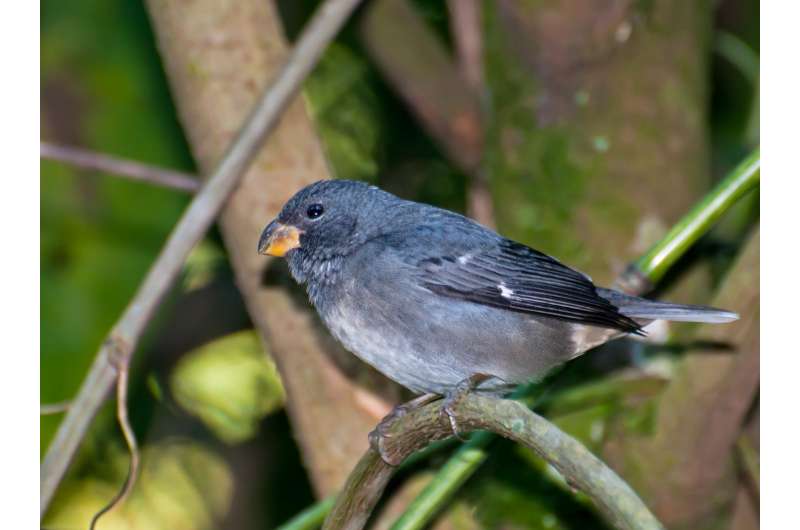May 29, 2017 report
How capuchino seedeaters have such big differences in plumage despite little genetic diversity

(Phys.org)—A team of researchers from the U.S., Brazil and Argentina has found clues that help explain why southern capuchino seedeaters have such wide differences in plumage despite being so closely genetically matched. In their paper published on the open access site Science Advances, the group describes the genetic analysis they conducted on the South American birds and what they found by doing so.
Southern capuchino seedeaters are a type of song bird, one of a group with familiar finch-like bills. They live in different parts of South America and have evolved in a unique way—the males have widely different plumage coloring and large differences in their songs. Prior research has shown that despite the differences in plumage, the birds are all quite genetically close. This led the team to wonder how or why that might be possible. They devised a theory that suggested that strong selection in an important part of the genome could perhaps lead to such differences. To find out if they were right, they conducted a DNA analysis of 56 individual birds from five species representing different plumages and found their genetic makeup to be nearly identical.
The team then took a closer look at the part of the genome known to be involved in creating melanins, a group of natural pigments. They found that 99 percent of the genome differences between the species occurred in such regions. But because speciation in seedeaters came about quickly, that led the researchers to suggest that it was due to actions by females—by exhibiting certain preferences in plumage or songs, the researchers theorize, the females were causing the males to adapt quickly.
The researchers conclude that natural selection due to female behavior has driven faster-than-normal speciation in the birds, resulting in wildly divergent plumage and song types—similar, they note, to the way the bills of Darwin's finches have changed to adapt to conditions in the Galapagos. They suggest their work offers new insight into the ways strong genetic processes acting on a few key genes can bring about fast evolutionary changes.
More information: Leonardo Campagna et al. Repeated divergent selection on pigmentation genes in a rapid finch radiation, Science Advances (2017). DOI: 10.1126/sciadv.1602404
Abstract
Instances of recent and rapid speciation are suitable for associating phenotypes with their causal genotypes, especially if gene flow homogenizes areas of the genome that are not under divergent selection. We study a rapid radiation of nine sympatric bird species known as capuchino seedeaters, which are differentiated in sexually selected characters of male plumage and song. We sequenced the genomes of a phenotypically diverse set of species to search for differentiated genomic regions. Capuchinos show differences in a small proportion of their genomes, yet selection has acted independently on the same targets in different members of this radiation. Many divergent regions contain genes involved in the melanogenesis pathway, with the strongest signal originating from putative regulatory regions. Selection has acted on these same genomic regions in different lineages, likely shaping the evolution of cis-regulatory elements, which control how more conserved genes are expressed and thereby generate diversity in classically sexually selected traits.
Journal information: Science Advances
© 2017 Phys.org




















